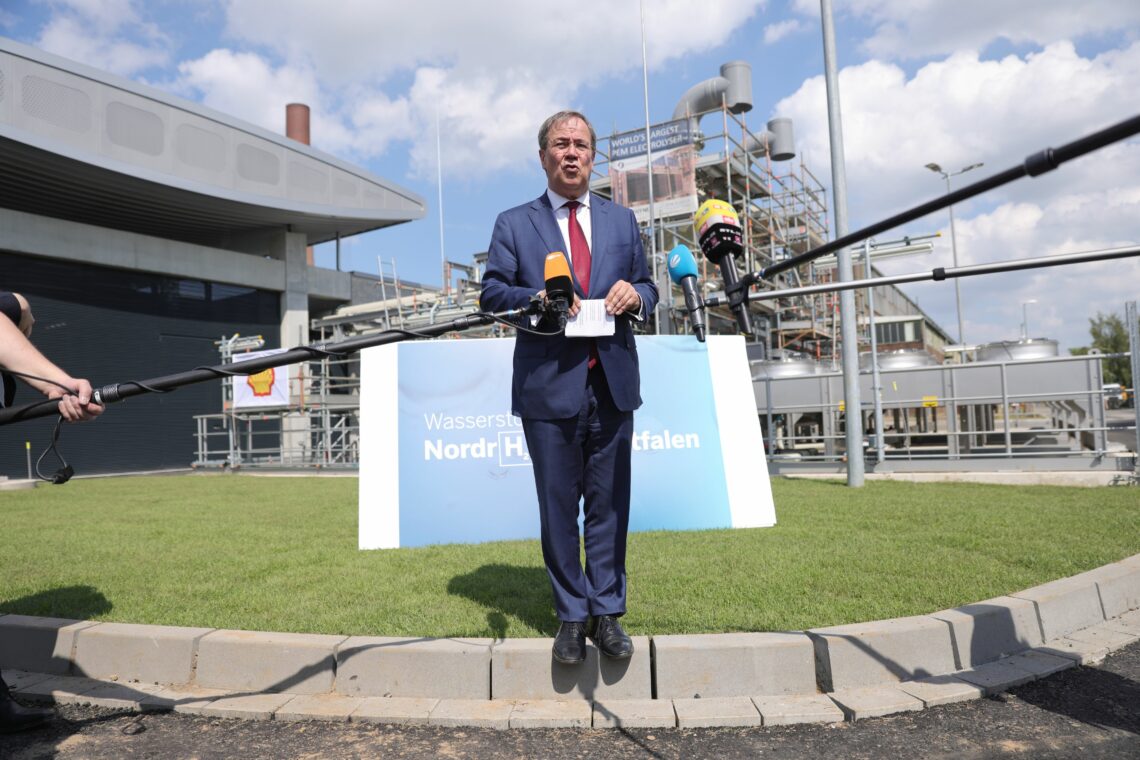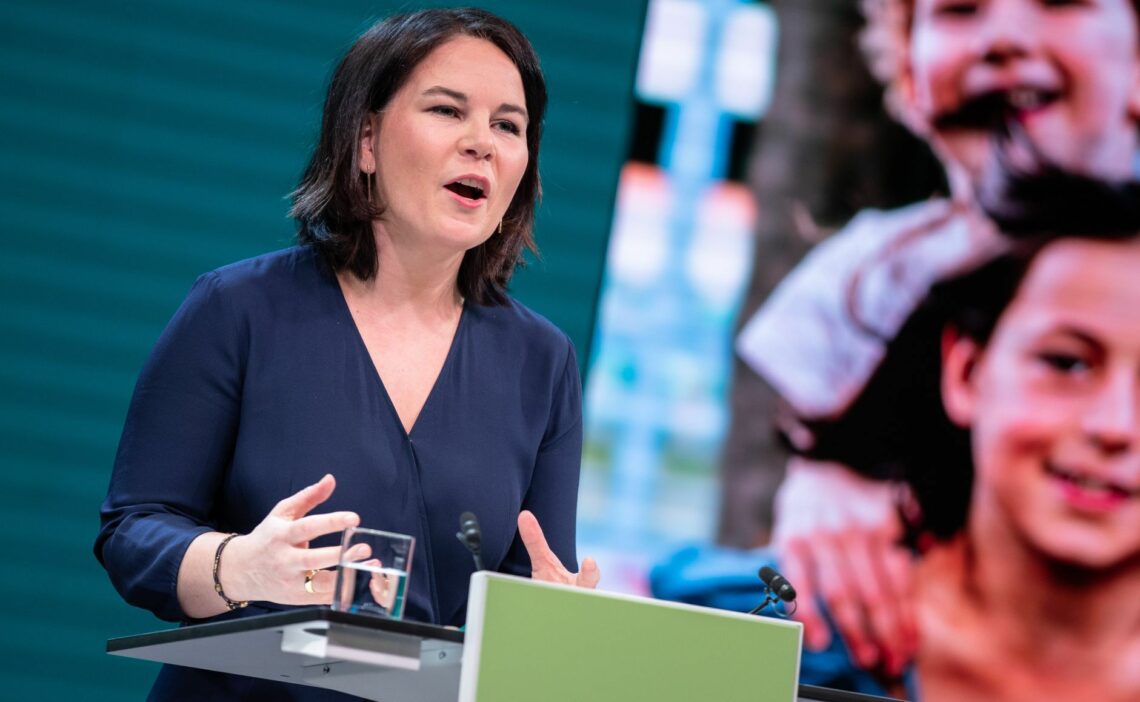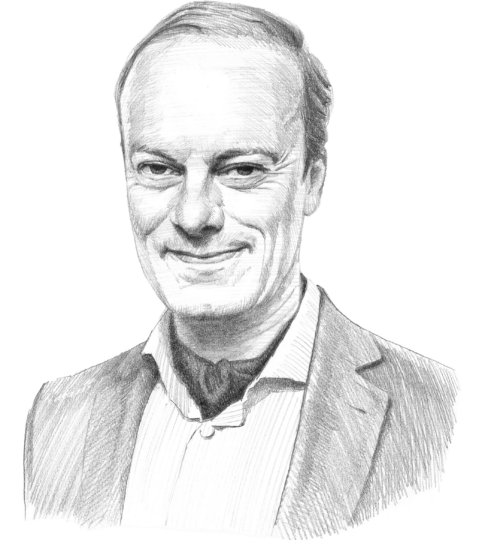Scenarios for the future German government: Part 2
Once the dust settles after the September elections in Germany, the parties will have to form a government, likely including the CDU/CSU, the Greens, and the FDP. What would this mean for Germany’s future in the key areas of foreign affairs, climate change and economic policy?

In a nutshell
- The CDU/CSU and the Greens will likely form a government
- There will be continuity in foreign affairs
- The coalition-forming process could take months
In part 1 we discussed possible outcomes of the German federal elections on September 26, 2021. Our key takeaways were:
- Armin Laschet of the Christian Democratic Union (CDU) is likely to become the next chancellor
- The Green party will almost inevitably become a major part of the next German government
- These two parties may need the liberal Free Democrats (FDP) to secure a majority coalition. The FDP will be willing to do so
- Still, there is a 10-15 percent chance that a left-wing government (likely under Green leadership) could be formed without the Christian Democrats
Some 20 years ago, the Christian Democrats and the Green party represented the extreme opposites of Germany’s right-left political spectrum. The Greens began as a protest party, with strong anti-capitalist and antiestablishment positions. Since then, both parties have moved toward the center, creating enough overlap to allow them to become coalition partners.
Still, the political goals – and even more so, the proposed means to achieve them – remain quite different. So, what stances will a government that includes these two disparate groups (and perhaps also the FDP) decide to take? In this report, we will focus on the scenarios for foreign affairs, climate change and economic and fiscal policy.
Foreign affairs
On foreign policy, there will be a lot of continuity under a Christian Democrat-Greens government. Both parties’ leaders are multilateralists and strong pro-Europeans. It took the Greens decades to finally accept NATO as an indispensable part of a European security system. However, they still cannot bring themselves to support the NATO defense-spending goal of 2 percent of gross domestic product (GDP). Due to its tradition of pacifism, the party remains critical of military spending, weapon sales or deploying German troops in combat missions.
A Green foreign minister would be harder on Russia and China than the current foreign minister or even Ms. Merkel.
At the same time, the Greens take a high moral stand when it comes to criticizing authoritarian states like Russia, China, Turkey or EU members such as Hungary and Poland. For these countries, a Green foreign minister (most likely Angela Baerbock, who studied international affairs) would be more difficult to deal with than current Foreign Minister Heiko Maas of the SPD, or even Angela Merkel herself. The Nord Stream 2 project with Russia, the refugee deal with Turkey and the investment agreement with China are among the few but important points where the Greens differ from mainstream German foreign policy.
The most likely future chancellor, Armin Laschet, is an equally ardent European. He grew up close to the Belgian, Dutch and French borders, and was a member of the European Parliament. However, as leader of an industry-heavy state, he has learned to seek pragmatic relationships even with troublesome partners and competitors, like Russia and China.
Adding the FDP to the coalition would not create much additional tension on foreign policy. The party’s positions tend to be hawkish on issues like human rights and the rule of law, and therefore may overlap more with those of the Green party than of the Christian Democrats.
Climate change
Climate change is likely to dominate the election campaign and may even decide the results. More than in most other countries, climate change has long aroused strong emotions in Germany. Germans saw the recent flooding that befell the west of the country and killed more than 200 people as a direct consequence of climate change and just another sign of a coming catastrophe.

Even months before that, political parties had already entered a bidding contest in declaring increasingly ambitious – national, or regional – climate goals. Bavarian Minister-President Markus Soder of the Christian Social Union (CSU), which partners with the CDU on the federal level, recently declared that Bavaria would be carbon-neutral by 2040 – a decade before Germany and many other countries have committed to do the same. And it comes much closer to the position of the Green party than to that of the recently published joint CDU/CSU party platform. Mr. Soder advocates phasing out coal as a national energy source earlier than currently planned. Bavaria has no coal industry, but the heavily industrialized state of North Rhine-Westphalia, led by Mr. Laschet, does.
It is not always clear in the current German debate that climate change is a global phenomenon, not a simply regional or national one. Germany produces only about 2 percent of the world’s CO2 emissions. Nevertheless, it is a top issue in the country’s politics. The Green party is a natural winner in this debate, since it has championed environmental issues since its founding.
All parties likely to enter the Bundestag this September (except for the AfD) subscribe to the goals of the 2015 Paris Agreement to limit global warming to below 2 degrees Celsius compared to preindustrial levels. They want to see Germany do much more and become a front-runner in the fight against climate change. This is not the place to reiterate the pros (technological leadership) and cons (ineffective use of taxpayer money) of the German approach to climate change. Suffice to say that the parties’ programs are all eloquent in declaring their goals, but comparatively laconic and confusing when it comes to the proposed means and costs of achieving them.
The CDU/CSU prefers putting a price on CO2 emissions. Many Greens have also begun to see the virtues of this system.
Both the CDU/CSU and the potential coalition partner FDP clearly prefer putting a price on CO2 emissions; if possible, through the European Union’s existing carbon trading system or – even better – with a global emissions trading scheme. Many Greens have also begun acknowledging the virtues of a pricing system that allows the government to set a ceiling on emissions but that lets emitters adapt or trade according to their costs and abilities.
Allowing market forces to solve environmental problems is ideologically anathema to the Greens. The party may have come a long way from its days of wanting to mandate vegetarianism in public administration to help save the planet, but the debate on how to tackle climate change will certainly be a crucial topic for any future coalition. And dealing with the issue will probably cost a lot of money.
Economic and fiscal policy
Last year, Germany recorded its biggest public deficit since the unification year of 1990, pushing its public debt-to-GDP ratio from 60 percent to 70 percent in just 12 months. Most of this spending resulted from unavoidable and, hopefully temporary, fiscal consequences of the Covid-19 pandemic. Due to the extraordinary circumstances, parliament has allowed the German government to deviate from the constitutional balanced budget “debt brake” rule. But looking at the party platforms, it would seem public expenditure and public debt are likely to increase further in the coming years, even if the pandemic is gone.
It is common for political parties to promise more public spending (often described as investment) during election campaigns. Typically, these plans are vague in addressing where the money should come from. However, this year is unusual in that all the major German economic research institutes have decided not to perform a detailed analysis of the party programs’ costs and benefits. They simply could not find the details necessary to run decent calculations.
Still, if we consider the three groups most likely to be in government, we can look at their statements and come to some basic conclusions about their general attitudes toward economic and fiscal matters and the impact their policies might have.
The Christian Democrats insist that fiscal and environmental sustainability must go hand in hand.
The Green party is the most ambitious in its spending goals. It says it does not want to abandon the “debt brake” (doing so would require a two-thirds majority in both chambers). But like other left-wing parties, it does seek a “reinterpretation” of the debt-brake rules by categorizing spending on climate change as “investments” and not “expenditures” that contribute to public debt.
In fact, the Greens’ platform would establish some two dozen new public funds that might not be counted officially as part of the federal budget. These funds are designed to compensate citizens for the costs of adjusting to numerous government programs intended to fight climate change or to “transform” capitalism. In addition to this (hidden) public debt, the party wants to increase revenues by raising taxes on the rich and introducing a wealth tax.
The CDU/CSU is almost as committed to environmental sustainability as the Greens are, but also insists on fiscal sustainability. The conservatives vow to uphold the debt brake and even indicate the possibility of tax cuts for middle-income earners and heavily taxed business investors.
If a third coalition partner were needed, the FDP would certainly support a CDU/CSU-led government in such an endeavor. The liberals would want to head the finance ministry, where they could nudge their coalition partners toward market-friendly ideas. Such initiatives could include raising public money from privatizing firms like Deutsche Telekom and Commerzbank, which are still party publicly owned, or extending CO2 trading schemes as a better way to fight climate change.
Complex outlook
All this speculation notwithstanding, German politics has become extremely complicated. After the September 2017 elections, it took until mid-March 2018 for Angela Merkel to be sworn in again as German chancellor. She finally cobbled together another CDU/CSU-SPD “grand coalition” after failing for months to find an arrangement that would satisfy both the Greens and the FDP. This year, an easier, faster transition to a CDU/CSU-Greens or a CDU/CSU-Greens-FDP coalition is unlikely. Not only have neither of these combinations been tried before at the federal level, but it will be a new presumptive chancellor – likely Armin Laschet – trying to form a government.
With that in mind, it is a fairly safe bet that on January 1, 2022, the traditional German Chancellor’s New Year’s Address will be given by none other than Angela Merkel.








